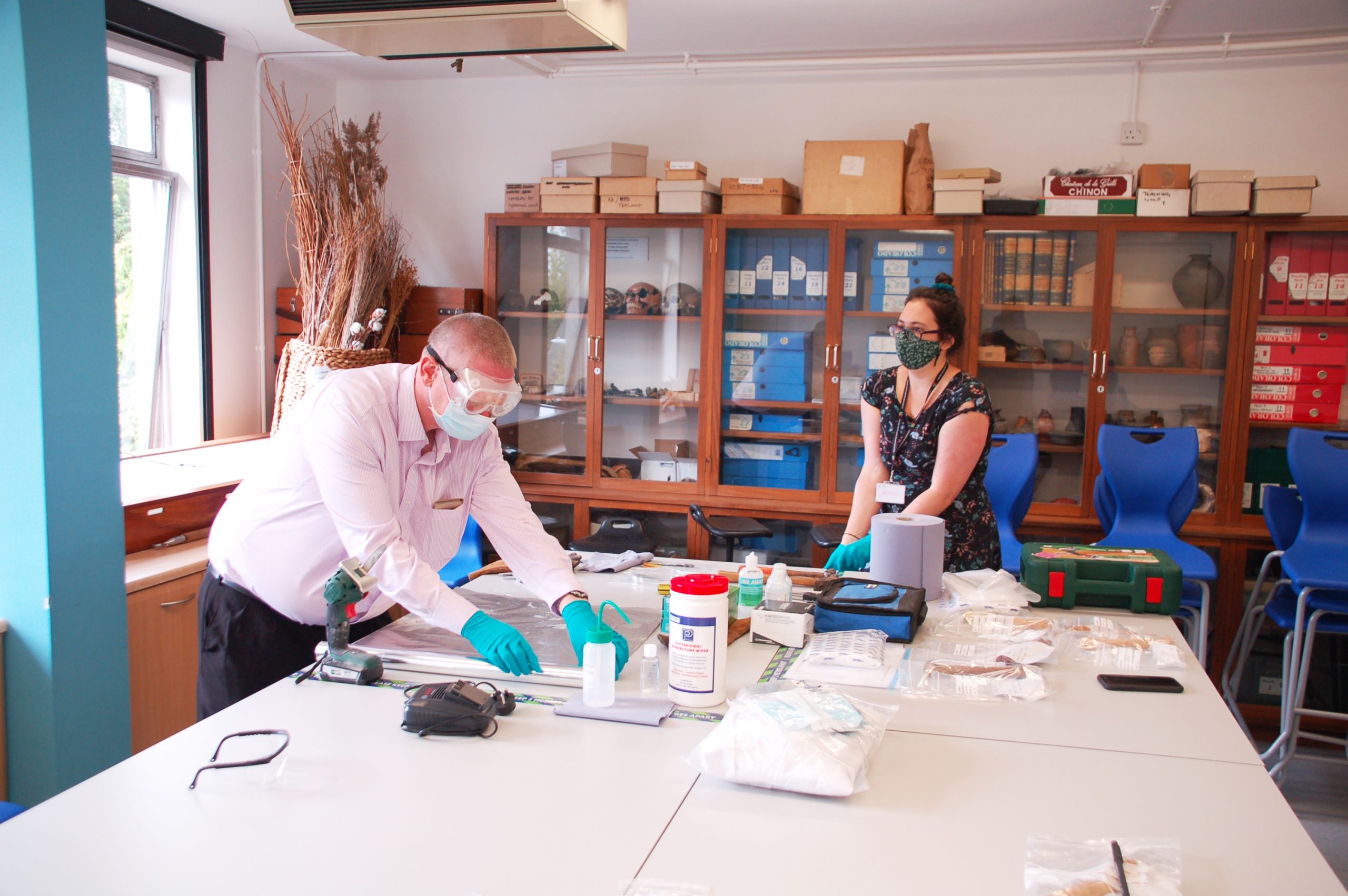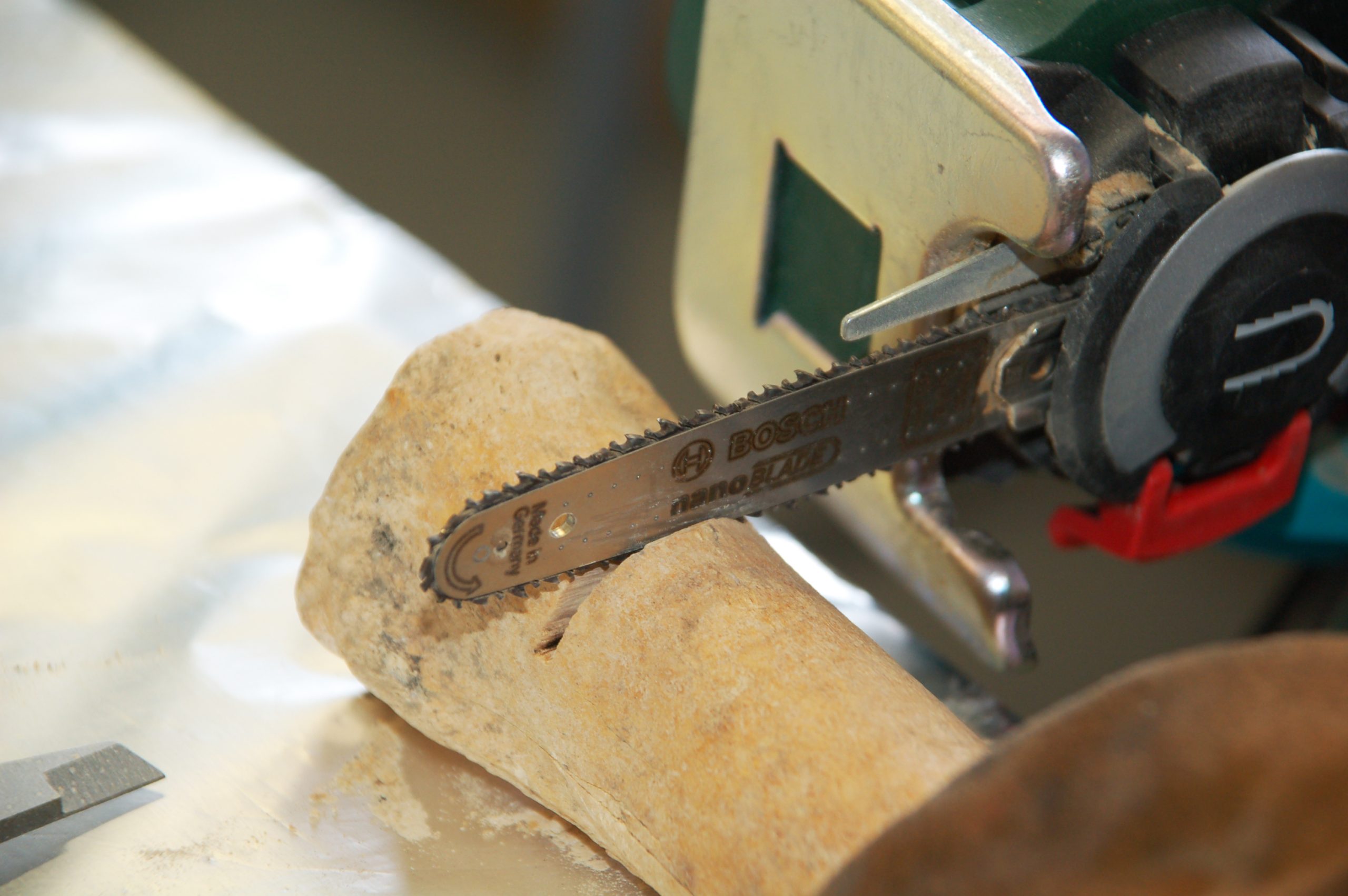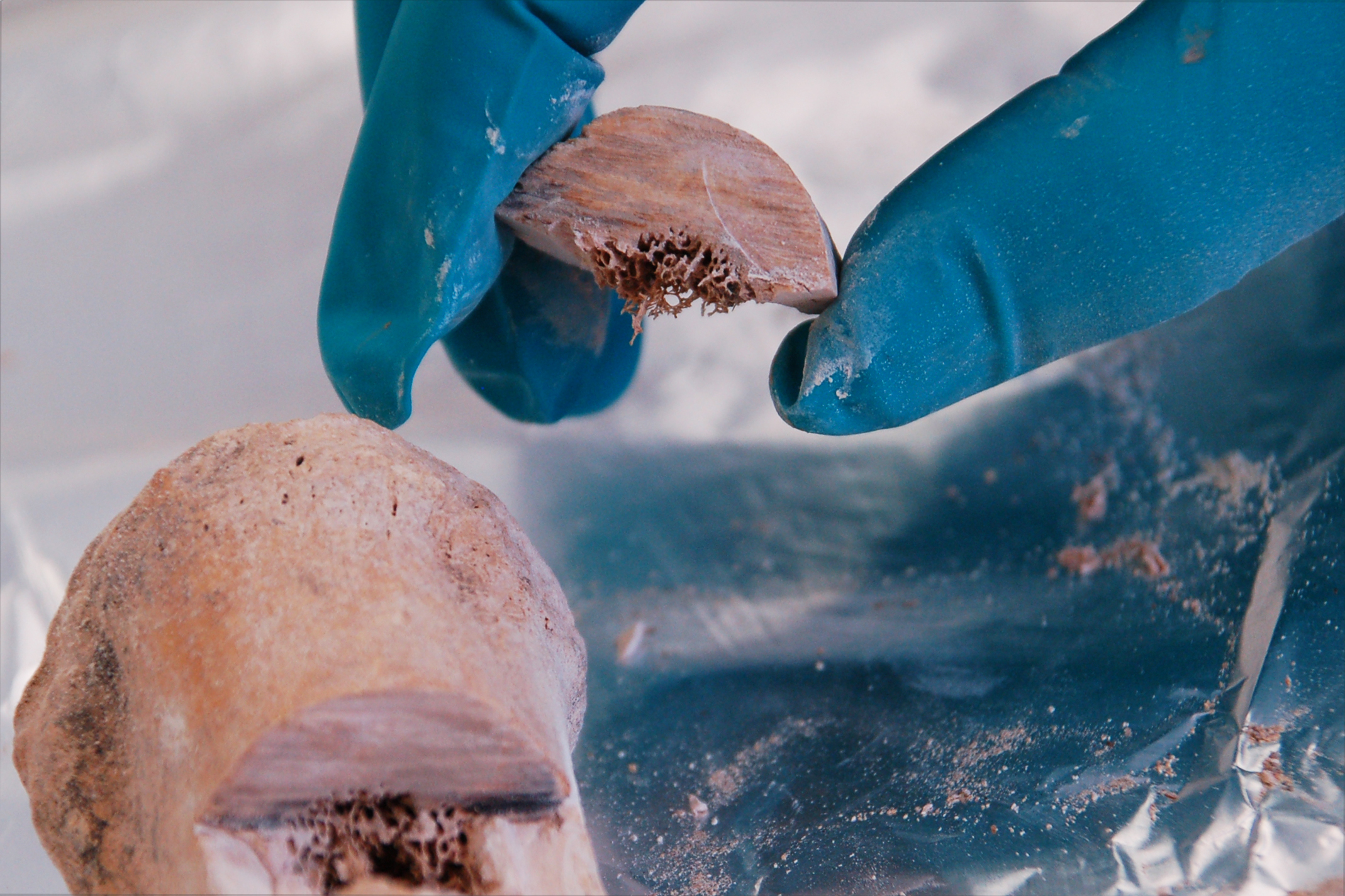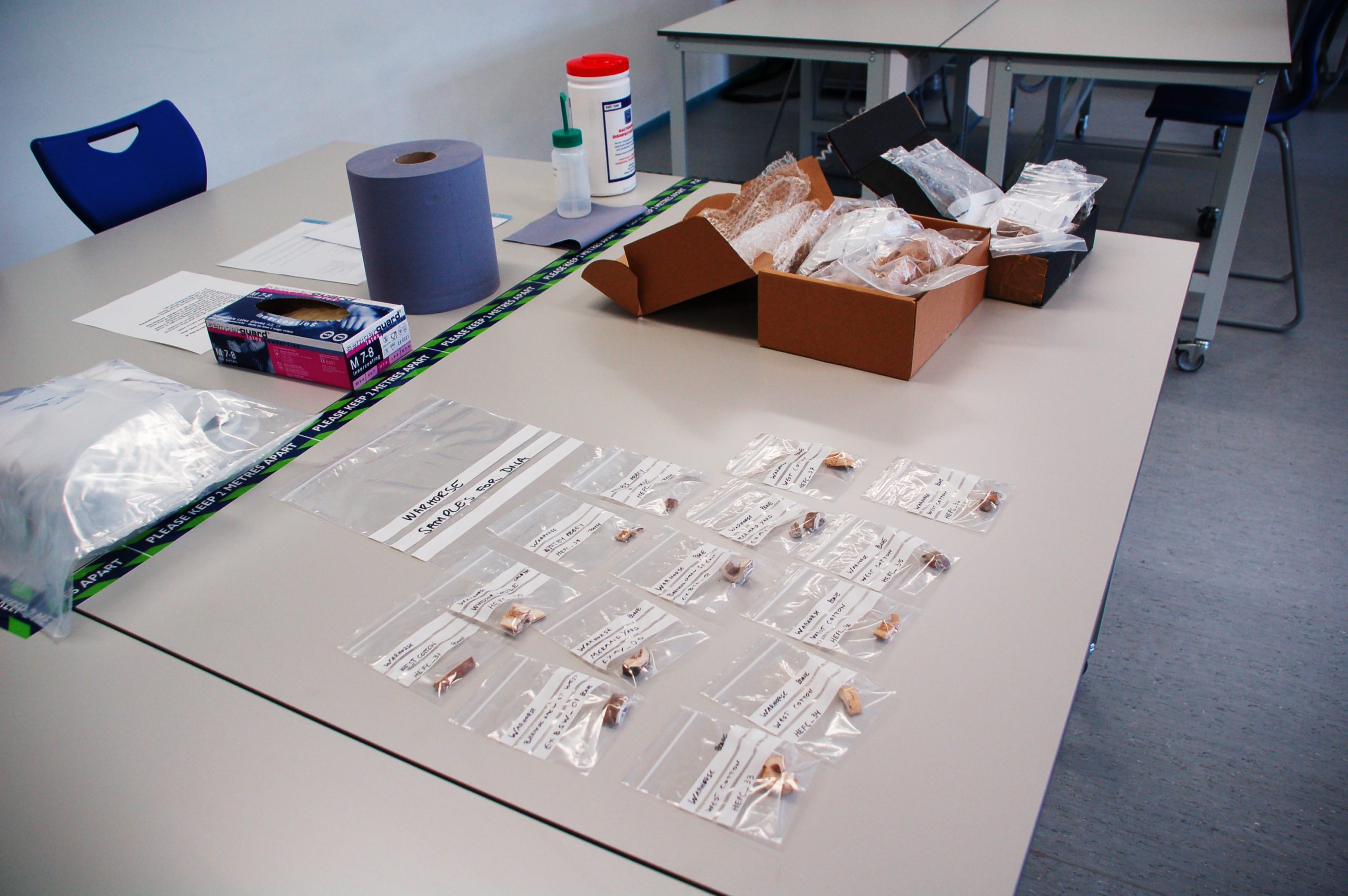The project team were delighted to be back in the laboratories this week and thought that followers of our blog might be interested to see some images of us in action.
Following the nationwide lockdown in the wake of the COVID-19 crisis, the University of Exeter is now able to facilitate access to laboratories and other technical facilities for some prioritised work, and it is excellent that we have been able to make some good early progress with the zooarchaeological (animal bone) work package of our project.
In the ‘new normal’, health and safety requirements are of primary importance course, and we have been finding new ways of working in our COVID-secure spaces.
This week we have been concentrating on taking small samples from horse bones and teeth that we will be sending to the laboratory of our project partners in Toulouse, France (see https://orlandoludovic.wixsite.com/pegasus-erc). In this world-leading specialist laboratory, our French collaborators will look to extract the ancient horse DNA that can hopefully shed light on where our medieval specimens fit into the ‘family tree’ of equine evolution.
The process of extracting samples, which is captured in the photographs below, is delicate and complex. Cleanliness is paramount, so the person taking the samples wears protective gear and a double set of gloves, while the cutting takes place on tin foil, so that all residue can be easily removed between samples. Tools need to be cleaned with ‘DNA-Away’, a decontaminant that prevents cross-contamination between samples.
To minimise damage to the bone, only a small sliver is removed, by cutting two small parallel slots with a dremel (a rotary cutting tool) or a small electric saw. The sample is then prised out with a screwdriver and bagged for dispatch to the lab in Toulouse. The project team are looking forward to hearing back on the preliminary results and thinking through their implications…

Members of the project team working on bone sampling in COVID-19-compliant working conditions.

Cutting a horse tooth from Whitby Abbey, Yorkshire, in order to extract a sample.

Sampling medieval a horse bone from Windsor castle. The small electric cutter allows precision work in order to minimise destructive damage to the bone.

One of the sliver-like samples of bone. This one (from the medieval settlement site of West Cotton, Northamptonshire) appears to be very well preserved, which bodes well for the prospects of being able to extract ancient DNA from it.

Our set of bagged and labelled samples, ready for dispatch to the laboratory in Toulouse.